“I wish I could predict exactly what my users want instead of guessing which features they like.” If you're a current or potential mobile app business owner, this is a completely valid wish. And guess what: you can absolutely predict your users’ needs in mobile apps.
No, we’re not talking about Harry Potter magic or tarot cards. Mobile apps can anticipate user behavior using AI for predictive analytics, a powerful combination of technologies and approaches that help identify users' pain points, requests, and challenges within an app.
In addition to traditional methods like user persona research, interviews, and testing, AI-based predictive analytics can be a game-changer for discovering exactly what your users crave in an app.
In this article, we’ll explore what predictive analytics in mobile apps is, how it works, key components like data collection and models, common techniques, and practical use cases. Finally, we'll guide you on how to start incorporating AI-driven insights into your app.
What is Predictive Analytics with AI?
Let’s start with the basics: what is AI predictive analytics? Or predictive analytics to begin with.
Predictive analytics is a method of using existing data to make forecasts about future events. Sounds simple enough, doesn’t it?
In other words, by collecting historical data about users’ behavior, businesses can predict the probability of what the users will do or expect from the app in the future. This data-driven approach helps businesses make informed predictions based on patterns from the past, such as user behavior, purchases, or engagement.
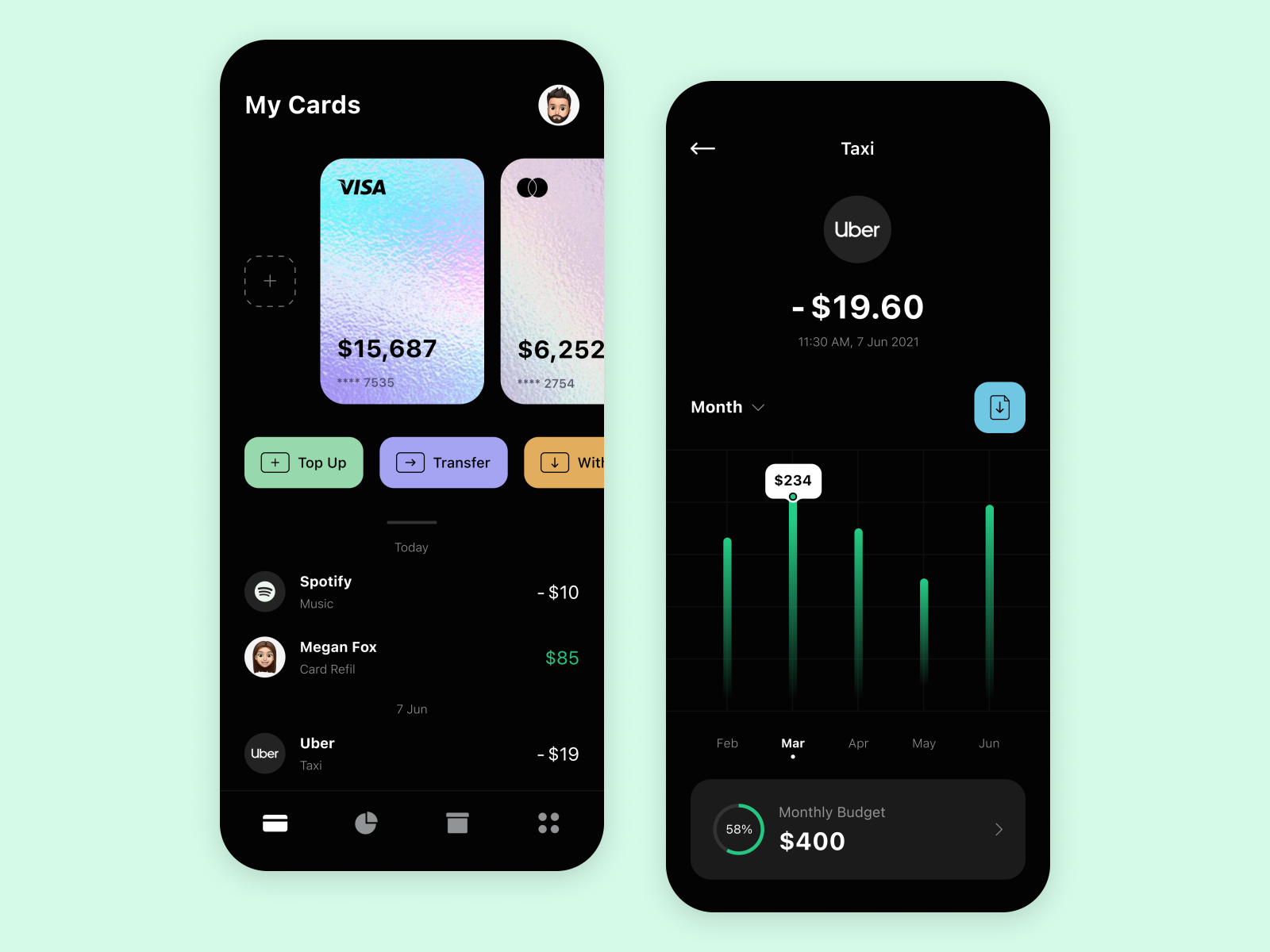
What’s more, instead of collecting and sorting data manually and, most importantly, analyzing each data set by a whole team of analysts, AI-powered predictive analytics automates the entire process. AI algorithms written only once can quickly sift through large amounts of data, identify patterns, and generate accurate forecasts without human intervention.
Plus, AI-based data analysis algorithms learn from themselves over time. Yes, that’s a good example of learning from your mistakes. So, the more data you feed the algorithms, the better it will get over time when making predictions.
What is the Process Behind AI-based Predictive Analytics?

As we have briefly mentioned, AI-based predictive analytics for mobile apps consists of several elements, such as the data itself and the algorithms that analyze it.
Let’s examine the main components of predictive analytics to give you a better understanding of how things work.
Data
Data is why the whole analytics process is organized. Often enough, companies collect loads of data about their users and don’t use it much. With setting up AI data analytics, all this information can start working to improve the app’s functionality and increase revenue.
What kind of data is suitable for AI predictive analytics? Lots of! Think of the data you are already gathering: how long users spend in your app, their navigation patterns, and their interactions with features.
You can integrate analytics tools like Google Analytics, Firebase, or Mixpanel. These tools track how users interact with your app, such as what features they use, how often they log in, and where they spend most of their time.
You can also collect data about your users' age, location, device type, and other demographic information during sign-up or onboarding. This helps you understand who your audience is.
Plus, you can buy data from other companies, too. This external data might include broader user demographics, purchase behavior, or industry trends, giving you a fuller picture of your target audience.
This was the data collection step. The next task is data sorting and pre-processing. All of the data should be in the same format so the algorithms can analyze it without an issue.
Raw data often comes in various forms: structured (organized and easily searchable, like user demographics, timestamps, or app usage statistics) and unstructured (more complex, bigger in size information, like images, user comments, and large text files), which makes it difficult to analyze. Therefore, sorting data is a must for organizing and making it ready for the next stage of predictive analytics.
Here’s how to approach data sorting and pre-processing:
- Clean the data: Remove any duplicates, errors, or irrelevant information to ensure your data set is accurate and valuable.
- Categorize data: Group your data into relevant categories. For example, you can sort user data into categories like user demographics, app usage patterns, or transaction history.
- Prioritize data types: Identify which types of data are most valuable for predicting user behavior. For instance, time spent on specific features may be more relevant for feature optimization than demographic details.
- Use data labeling: For machine learning algorithms to work effectively, you’ll need to label the data clearly. Labels like “user actions,” “app session time,” and “conversion events” help ensure your AI system knows what it’s analyzing.
Don't worry; you don’t have to go through this process all by yourself. A developer or data analyst from your mobile app development partner will undertake the process and extract and organize the data types you need.
Plus, many data analytics tools for mobile apps, like Firebase, allow you to extract data that is already organized and ready to use.
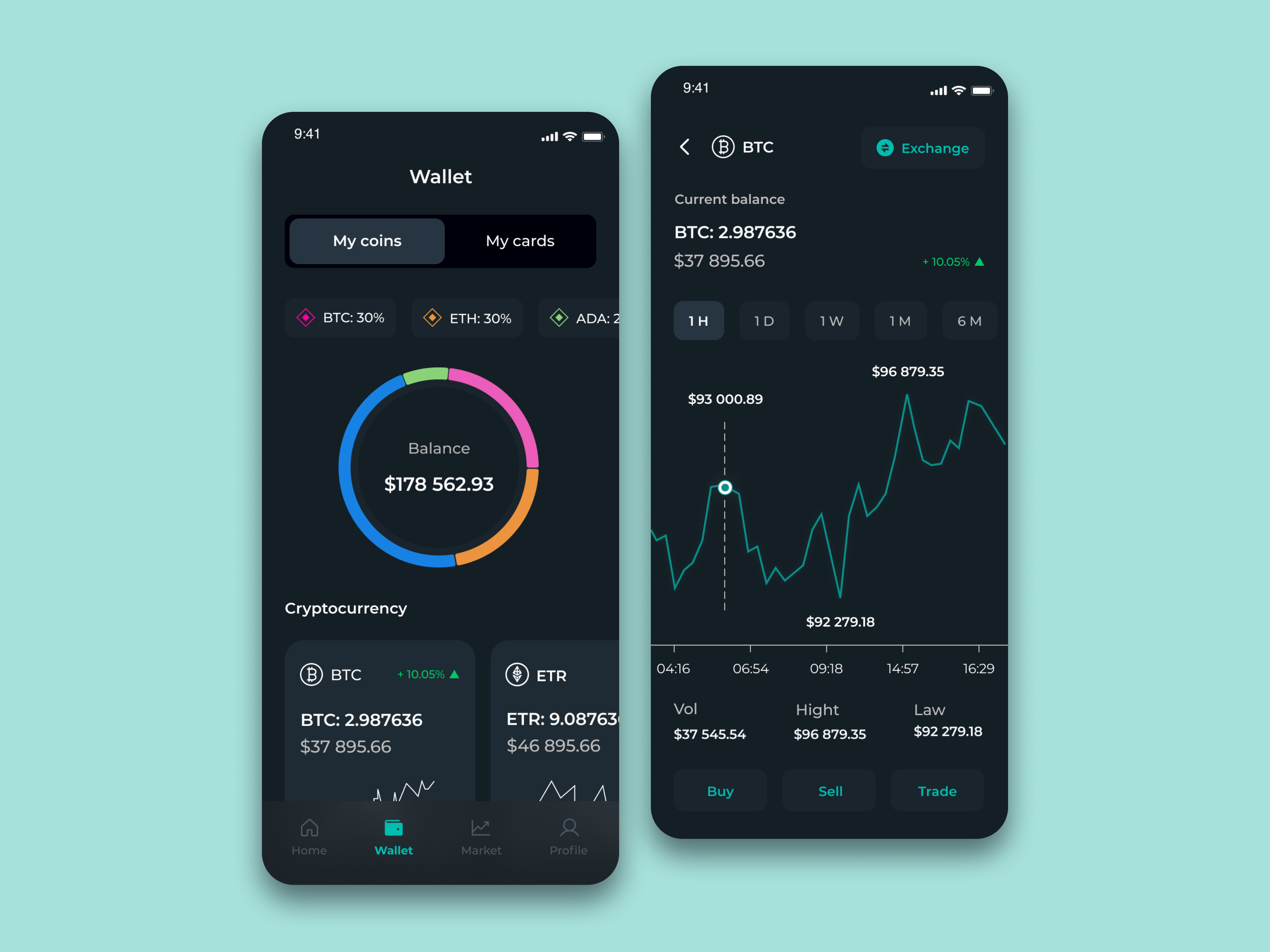
Model development and training
Now that your data is ready, it’s time to build predictive models that can help your business thrive! Data scientists use different tools and techniques to create these models, choosing the best one based on what you want to achieve and the kind of data you have.
For mobile app predictive analytics, commonly used model types include:
- Classification models: Ideal for sorting users into segments based on behaviors or preferences, classification models are highly useful in apps where understanding user response is key. For instance, by analyzing user activity data, classification models can identify which user segments are most likely to respond to specific marketing campaigns or app updates. Techniques like logistic regression, decision trees, and neural networks are frequently used here.
- Regression models: These models predict continuous outcomes, such as estimating how much a user might spend over time within the app. Regression models help businesses plan targeted strategies for retention and spending, as well as optimizing in-app monetization features.
- Clustering models: Using unsupervised learning, clustering models group users with similar behaviors into segments, such as categorizing users based on app engagement levels or purchasing patterns. These models are valuable for tailoring marketing or content strategies to each segment. Algorithms like k-means and Gaussian Mixture Models are popular for clustering.
- Time series models: Useful for predicting trends over time, time series models analyze data at regular intervals to help forecast future activity. For instance, they could be used to predict peak user engagement times, informing app performance optimization. Models like ARIMA and seasonal decomposition are common for time-series forecasting.
To develop these models, data scientists often use a mix of techniques:
- Regression analysis: Identifies relationships between factors, helping predict how changes like new feature introductions may impact user engagement or spending.
- Decision trees: These visual tools break down decision paths, making them effective for user behavior analysis even with missing data points.
- Neural networks: Advanced models that detect complex patterns, neural networks are particularly helpful in handling large data sets and validating other model results.
Predictive analytics model development can be done with machine learning platforms such as TensorFlow, Google Cloud AutoML, or using coding frameworks like Python and libraries like scikit-learn.
During the training phase, we feed the model historical data so it can learn patterns and trends. Choosing the right algorithm is key because it determines how well the model can learn. For simpler tasks, straightforward algorithms like linear regression might do the trick, but for more complex challenges, we might need something like a neural network.
If you're looking for a quicker and more budget-friendly option, consider using ready-made solutions or third-party APIs for predictive analytics, such as Google Cloud AI, Azure Machine Learning, Firebase Predictions, or AWS SageMaker. These tools can be integrated easily, saving you time and resources. Rather than requiring in-depth data science or model-building knowledge, these tools rely on machine learning models already pre-trained by companies that created them.
Often enough, we offer our clients the opportunity to integrate third-party analytics tools, especially at the MVP stage of app development, so they don’t need to invest in more complex predictive analytics setups but can still enjoy the benefits of anticipating user behavior and preferences.
Testing, deployment, and gathering results
Once we have a trained model, it’s time to test it! We do this by using a separate set of data that the model hasn’t seen yet. This way, we can check how well it performs and if it can make good predictions on new information.
When we’re happy with the model’s accuracy, we deploy it into a live environment. This means it starts making real-time predictions. For example, a model for an e-commerce app might analyze current sales data to predict what products will be in demand soon, helping the business keep its shelves stocked.
The beauty of AI-driven models is that they keep learning and improving. As new data comes in, we can retrain the model to enhance its accuracy. This ongoing learning process ensures that our predictive analytics stay relevant and effective as things change.
Why Integrate AI-based Predictive Analytics in Mobile Apps?

Be it custom AI predictive analytics model development from scratch or integration of a third-party tool, setting up predictive analytics for a mobile app takes some time and effort. However, based on our clients’ experiences, the benefits of incorporating predictive analytics far outweigh the initial investment.
Here’s how AI-driven predictive analytics can add value to your app:
- Prioritizing features: Predictive analytics can pinpoint which features are most likely to engage users, helping you invest in developments that truly resonate with your audience.
- Improving user flow and navigation: By analyzing screen time, back-and-forth navigation patterns, and taps, predictive models reveal areas for flow enhancements that make the app more intuitive and seamless.
- Understanding audience profiles: Analytics tools provide insights into user demographics, digital proficiency, and preferences, enabling better design decisions and targeted feature enhancements.
- Anticipating market trends: Analyzing open data within your industry, predictive analytics helps you stay ahead by forecasting trends that can guide strategic decisions and future-proof your app.
- Managing risks: AI-powered insights help anticipate and mitigate potential risks, strengthening your app’s resilience and improving user trust.
- Delivering personalization: Predictive analytics supports personalized experiences, suggesting products or recommendations tailored to each user’s preferences.
- Testing MVPs and full-scale apps in real conditions: Predictive analytics supports real-world A/B testing, allowing you to measure user responses to different versions of your app.
These benefits help companies maximize their efforts, be it introducing new features or personalizing the experience, and not put their budgets down the drain with ineffective or redundant actions.
AI Predictive Analytics Use Cases in Mobile Apps

Predictive analytics can bring valuable insights to all kinds of apps, from fitness to e-commerce. While some benefits, like personalization and smoother user experiences, are helpful for any app, each type can use predictive analytics in its own way to reach specific goals. Depending on the app’s features, predictive models can help boost user engagement, improve efficiency, and support better results. Here’s how predictive analytics can make a difference for various types of mobile apps.
E-commerce apps
AI predictive analytics allows e-commerce apps to tailor user experiences based on browsing and purchase history, enhancing conversion rates and customer satisfaction.
- Personalized product recommendations: Based on a user’s search patterns and previous purchases, AI can suggest products they are more likely to buy. For instance, if a customer frequently browses home office supplies, the app could recommend desk accessories or ergonomic chairs.
- Inventory demand forecasting: Analytics can predict peak seasons or high-demand periods by studying historical sales data. A fashion retailer, for example, might use predictive models to stock up on warmer clothing items as temperatures drop, ensuring popular sizes are available. A bookshop app can offer users spooky novels when Halloween is just around the corner.
- Dynamic pricing: Adjust prices in real-time based on market demand, competition, and customer behavior. This approach is particularly common in ticketing, where prices can fluctuate based on availability and demand.
Introduce predictive analytics in shopping apps to enhance the shopping experience, optimize inventory management, and drive sales through tailored recommendations.
Fitness and wellness apps
Fitness and wellness apps use predictive analytics to offer users a tailored experience based on personal health data and goals.
- Custom suggestions: The app can analyze past workout data to recommend exercises that suit the user’s current fitness level and goals. For example, if a user focuses on cardio, the app might suggest interval running routines or cycling classes.
- Optimized reminders: Using activity data, an app can predict the best times to send workout reminders, ensuring they align with the user’s typical daily routine. A user who exercises in the evening might receive a gentle nudge after work hours rather than midday.
- Health tips based on data: By examining a user’s sleep and nutrition habits, an app can offer customized wellness tips, such as encouraging hydration or suggesting meditation sessions on days with low sleep quality.
- Goal-reaching predictions: Predictive analytics can help users set and achieve health goals, such as weight loss or muscle gain. By inputting starting stats like weight, current fitness level, and target goal, users can log their nutrition and activity for a short period. The app then analyzes this data to provide a realistic prediction of how long it might take to reach their goal.
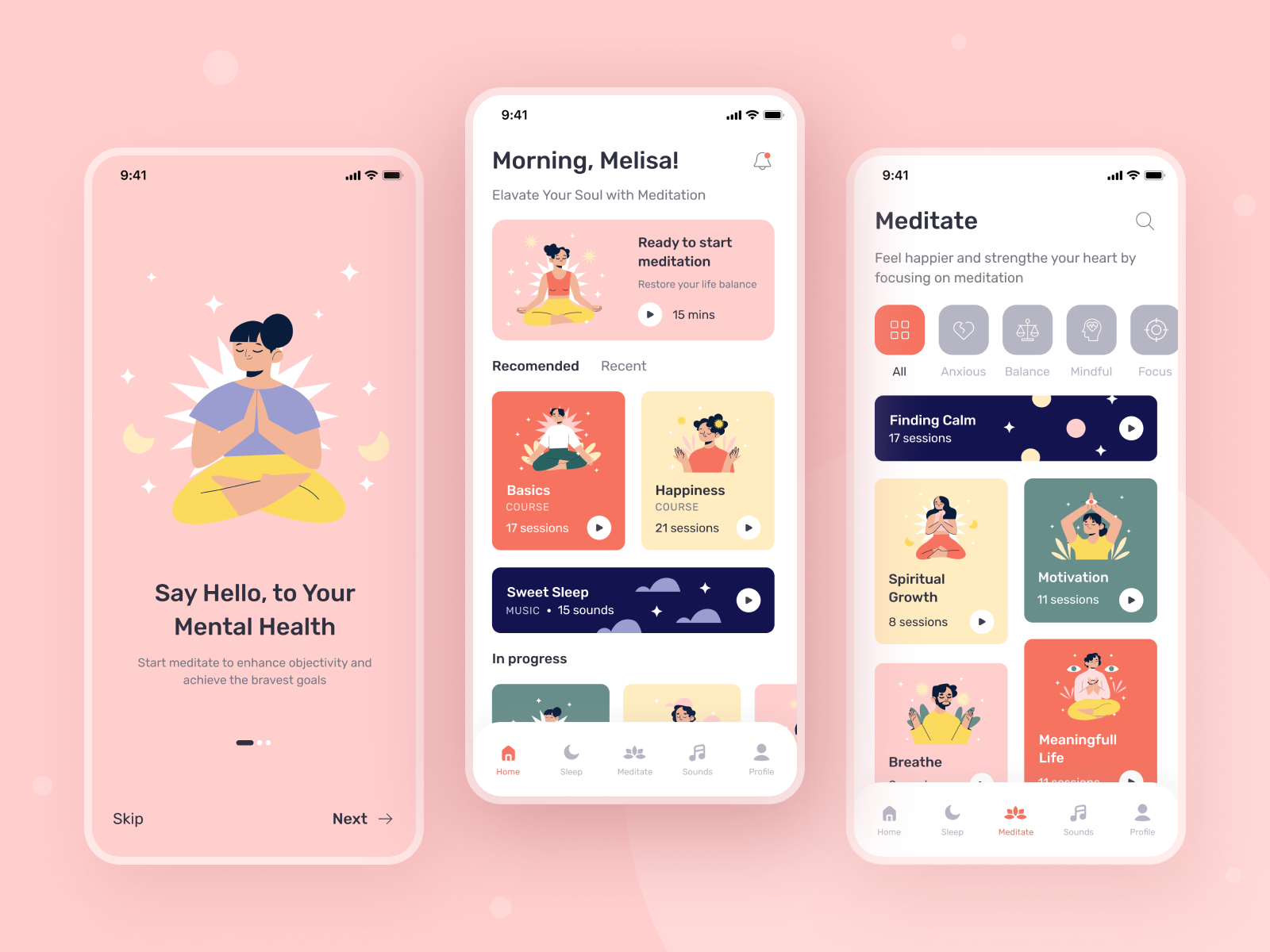
Fitness and wellness apps use predictive analytics to help users stay motivated, track their progress, and achieve their health goals through personalized insights.
Healthcare apps
Healthcare apps use predictive analytics to enhance patient care, manage conditions, and improve preventive care options.
- Risk detection for health conditions: Apps can monitor symptoms and patterns to flag potential health risks, like high blood pressure or diabetes. If a user consistently reports elevated heart rates, the app could suggest booking a health checkup.
- Preventive care recommendations: Based on age and health history, the app could remind users of necessary checkups or screenings, such as annual blood tests or flu vaccines, to promote preventive care.
- Medication reminders and refills: By analyzing prescription history, the app can predict when a user will need refills and send reminders, reducing the chance of missed doses.
Healthcare apps use predictive analytics to improve patient care, manage conditions, and offer preventive care options, ultimately leading to better health outcomes.
Social media apps
Social media platforms use predictive analytics to refine content feeds and advertisements based on user engagement patterns.
- Content recommendations: By tracking user likes, shares, and comments, social media apps can predict which posts or videos users might engage with most, creating a more relevant feed. A user who engages heavily with travel content might see more travel blogs and destination guides.
- Harmful content moderation: Predictive models can flag posts with a high potential for negative interactions, helping prevent exposure to harmful or divisive content. For instance, if specific keywords or sentiment patterns are detected, the content may be reviewed before being published.
- Targeted ad personalization: Analyzing user interests helps predict ad preferences, showing promotions for products or services most relevant to the individual. A user who frequently interacts with food-related posts might see ads for cooking classes or meal kit subscriptions.
- Churn prediction: Analyze user behavior to identify those likely to disengage or leave the platform. This insight allows businesses to proactively address concerns and retain users.
Social media apps apply predictive analytics to understand user preferences, improve engagement strategies, and deliver personalized content that keeps users connected.
Banking and FinTech apps
AI predictive analytics in banking apps enhances security, tailors financial products, and offers personalized advice to users.
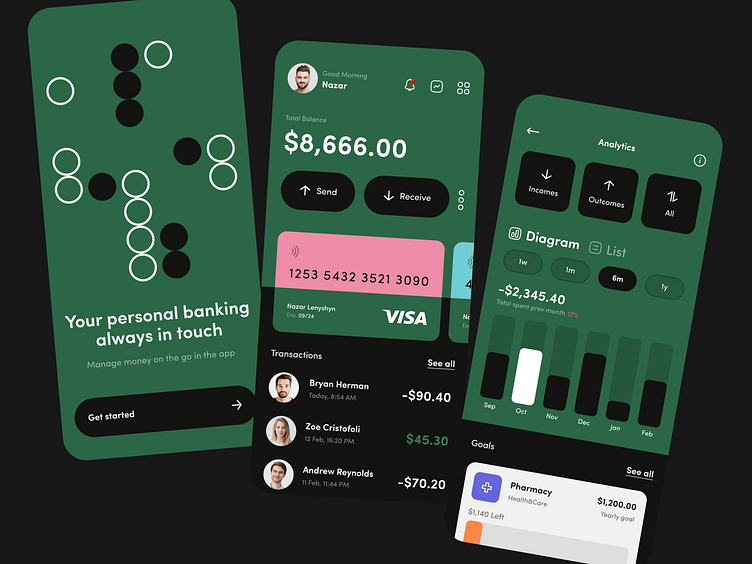
- Fraud detection: The app can monitor unusual spending patterns to detect potential fraud. If a user typically makes small, local transactions but suddenly charges large sums abroad, the app might flag the activity and notify the user.
- Investment advice: Based on past spending and savings behaviors, the app can suggest investment options aligned with the user’s risk tolerance. For a cautious saver, the app might recommend low-risk bonds or high-interest savings accounts.
- Creditworthiness and loan predictions: AI models can assess spending patterns and credit history to predict the user’s eligibility for a loan. If a user maintains consistent monthly savings, the app could offer pre-approved loan options.
- Portfolio calculations: Predictive analytics can help users manage and grow their portfolios by forecasting potential investment outcomes. By analyzing past financial data, current market trends, and user risk preferences, the app can offer tailored projections for various assets. For example, a user may input their current investment mix, monthly savings target, and desired growth rate, and the app can simulate potential growth scenarios, providing insight into expected returns over time.
Banking and FinTech apps leverage predictive analytics to enhance security, provide tailored financial products, and offer personalized advice that aligns with users' financial goals.
Energy and IoT apps
Energy and IoT apps can use predictive analytics to improve energy management, saving costs and enhancing convenience.
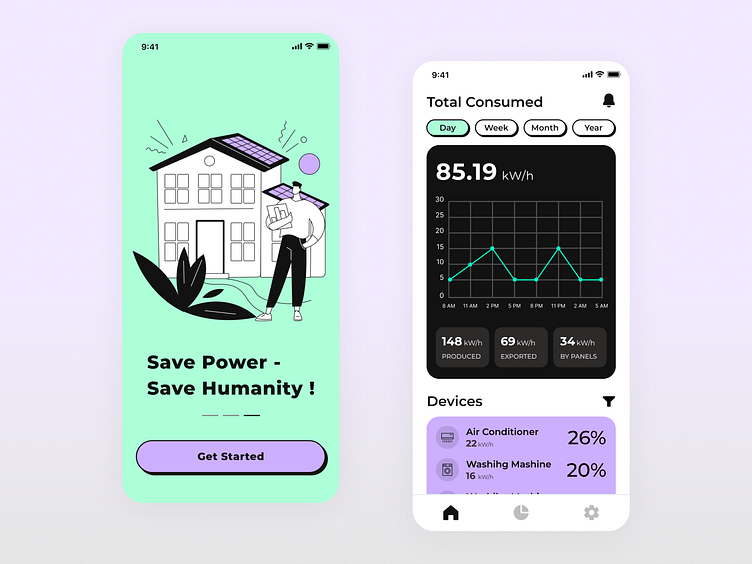
- Energy consumption forecasting: Apps can predict high-consumption periods and suggest conservation tactics to reduce bills. For instance, if energy usage spikes in the morning, the app might suggest pre-programming appliances for off-peak hours.
- Device optimization: Smart home apps can use weather data to automatically adjust thermostats or lighting based on daily temperature forecasts. On hot days, the app might start cooling the home a bit earlier to maintain comfort.
- Appliance usage alerts: By monitoring energy patterns, IoT apps can send alerts when specific appliances draw excessive power, potentially flagging faulty devices that need maintenance.
Energy and IoT apps employ predictive analytics to optimize resource usage, improve system efficiency, and provide users with insights into their consumption patterns.
Supply chain management and storage
Predictive analytics in supply chain apps helps streamline inventory management and logistics, minimizing costs and improving efficiency.
- Demand prediction: The app can forecast inventory needs based on past order data, preventing overstocking or shortages. A grocery app, for example, could predict the demand for popular items like dairy products based on previous weekend sales.
- Delivery delay forecasting: By analyzing traffic, weather, and other factors, the app can predict potential delivery delays and offer alternative shipping options, keeping customers informed.
- Restocking optimization: Supply chain apps can recommend restocking schedules based on usage patterns, helping manage storage space effectively. A warehouse management app could suggest peak times to reorder products to ensure they stay in stock without overloading inventory.
- Storage unit optimization: Predictive analytics in supply chain apps can improve the use of storage space by analyzing product turnover rates, seasonal demand, and inventory patterns. For instance, a warehouse management app might track which products are slow-moving versus those that move quickly, suggesting optimal placements and organization for easy access. By predicting when specific items will be in higher demand, the app can also help prioritize space allocation, minimizing clutter and ensuring that popular products are readily available without overcrowding.
Supply chain management and storage apps utilize predictive analytics to streamline operations, manage inventory effectively, and ensure timely deliveries, enhancing overall supply chain efficiency.
How to Start Collecting Data and Introduce AI Predictive Analytics in Your App?

Now that you understand the basics of predictive analytics and its benefits for different app types, you might be wondering how to actually introduce AI-based predictive analytics into your own app. While we can’t predict the exact process for your specific case, we can give you an overview of what it typically looks like and how we approach it at Perpetio.
1. Define the goal for predictive analytics
The first step is to clearly define your goal for predictive analytics. Depending on what you want to achieve, like predicting product demand, the analytics methods and tools will vary. At Perpetio, we start with an introductory call where we discuss your desired outcomes. Then, our sales managers talk with the tech team to create a proposal outlining the necessary tools, methods, timeline, team members, milestones, and budget.
2. Provide your team with data
Next, you’ll need to provide your team with data. You can share any ready-made datasets you have or give us access to collect the data ourselves. Additionally, we can gather industry data from other open sources. Once we have everything, we’ll organize and sort the data to ensure it’s ready for analysis.
3. Choose predictive modeling techniques
We’ll then choose the best predictive modeling techniques, such as regression, decision trees, or neural networks, and develop a predictive model. You can opt for various third-party tools, and our tech team will suggest the most suitable options in the proposal. We’ll also ensure you understand the tech decisions being made and how they fit your needs.
4. Testing and deployment
Before releasing any product, we always conduct thorough testing to catch any small issues that could spoil the user experience. The same applies to predictive analytics models; we ensure everything works smoothly before going live.
5. Refining and maintenance
As mentioned earlier, models are continuously learning, so they will keep improving over time and become more accurate in their predictions. We’re always here for maintenance and checkup services, so you can reach out anytime if you want us to review how the model is performing and make any necessary tweaks.
With an experienced and knowledgeable team, setting up AI predictive analytics for mobile apps can be a smooth and straightforward process. When the right goals are defined, and the tools are chosen thoughtfully, apps can start delivering accurate predictions early on. This means you can begin using data-driven insights to enhance user experiences, optimize operations, and achieve your business objectives without complications.
Consider Perpetio Your Trusted Partner
If you’re looking for a reliable, responsible, and experienced tech partner, Perpetio could be the perfect fit. Our team works with analytics across mobile apps of all types and scales. When building an app from scratch, we integrate tools like Firebase, enabling the team and clients to track metrics, monitor for crashes, and eventually implement predictive analytics.
We’re also here to support apps developed elsewhere, providing maintenance or adding new features as your app grows. Whether you want to expand an MVP, add predictive capabilities, or simply improve existing features, Perpetio can help.
Ready to learn more about your users and predict their needs with AI predictive analytics? Let’s talk about how Perpetio can help you with that.





